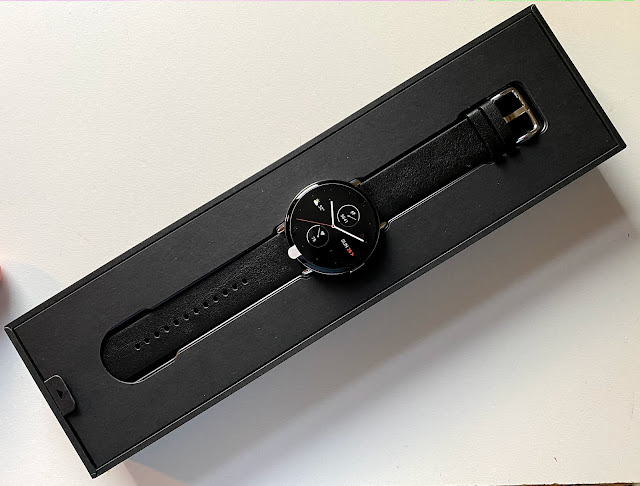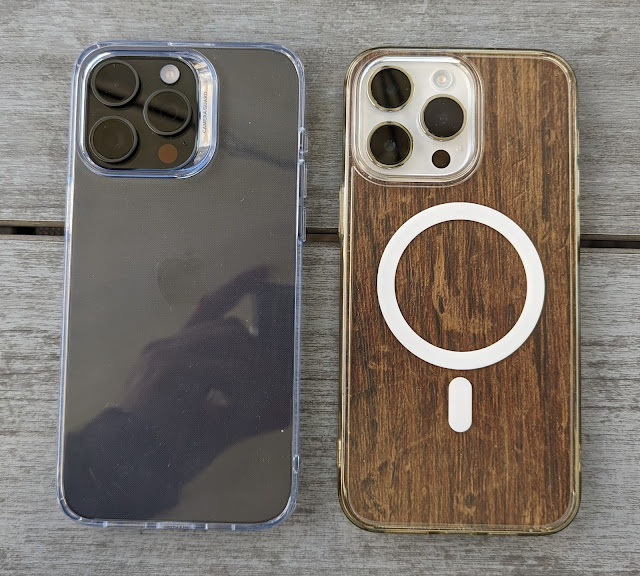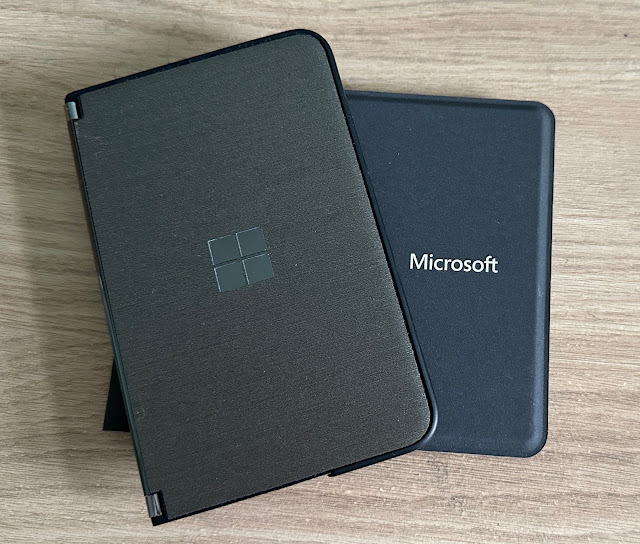Review: Zepp E fitness smartwatch
Despite the much-publicised failures of Android Wear and the equally publicised successes of the Apple Watch series, the smartwatch/wearables world is still exploding - almost everyone seems to be experimenting with some form of band or watch - and I'm no different. Although I'm more a smartphone guy, I've tried a number of wrist options. The Fitbit Versa got very close to my perfect wearable (I reviewed it here) but ultimately the tension of a band on my wrist wasn't something I could stand for multiple days at a time unless there was a single huge benefit.
The arrival of the Zepp E, made by Huami, also makers of the Amazfit range, presented quite a benefit though:
- Compatible with any Android or iOS phone (so many other accessories are limited to a particular platform, manufacturer or version)
- A built-in SpO2 (oxygen saturation) sensor (now matched by the top end Apple Watch in the last week or so, and a few others, mind you)
- Sleep quality monitoring (also tied into SpO2)
- An emphasis on health rather than phone notifications - the watch shouldn't be, I contend, an extension of the phone, but should have its own role in your life
- Stylish looks and thin form factor, so it doesn't feel like there's a tech-block on your wrist, but rather a traditional watch
The photo above shows the new update installing on the Zepp E - I've had two updates in a month, so Huami does seem on the ball. Some features rely on server-side data, so there are bugs to look at there too, but the end result is something stable now, as I say.
At just over £200 this is going to be a fairly tough recommendation, but the materials and style are appropriate to the price, while the core health features are pretty impressive.
The AMOLED display is just gorgeous - not the highest resolution, but clear and high contrast in all light conditions.
First up, it's worth pointing out that there are dozens of watch faces, not just changing the look of your watch but also the data presented - some watch faces surface data that others don't, and vice-versa. So you'll see a variety of faces in this review. Thankfully changing faces is simply a long press on the screen and then swipe to the face you want. Easy to change on the fly if your preferences or needs change.
You can also change watch faces and download more through the companion mobile app:
The core data on the faces is time and date, obviously, with current heart rate, PAI (physical activity indicator, based on a 10 day rolling average), steps taken, calories burned and watch power standard, then various face options offer weather summaries, day of the week, seconds, and more. It's a lot of fun.
The Zepp E is stainless steel and, turning the watch over, you can see the pair of charging contacts (with magnets, to auto-align them on the supplied lead), then two pairs of sensors (red and green LEDs). One pair for heart rate, which is effectively continuous, the other for SpO2 measurement, which needs a little more care.
You see, measuring SpO2, oxygen in the blood (of which you want more, not less, so a low reading means that something's wrong with your lungs or body in general), using sensors on the wrist isn't trivial. Most commercial 'pulse oximeters' work from a fingertip, where the blood flow is more reliable - doing this on a wrist, where the exact position of the watch relative to your veins is a lot less precise, is much harder. As a result, SpO2 can't be measured automatically through the day, since you're moving too much.

There's a dedicated SpO2 measuring function, requiring you to lay your fore-arm horizontally for a minute and stay rock still - this works, but is rarely convenient. So there's no real way to get a 'your blood oxygen is too low' warning from the Zepp E, understandably, though at least you can measure it in a minute if you're worried.
Happily, SpO2 measurement works much better at night and there's a 'sleep breathing quality' function that I turned on - this samples SpO2 during the night, when you're still most of the time anyway. In addition to giving you data points about your blood oxygen generally, this also gives you extra information about your sleep pattern - I'm all about getting the best sleep possible (here's why) and the Zepp E is a pretty good tool for the job.
A press on the single button brings up the 'apps' - such as they are, but don't get the wrong impression here. I'm not after a smart watch that has an app store or has counterparts to services on my smartphone - that's just too much duplication and too many notifications for my brand and body to handle.
The apps that are here are just fine, in a swipe-scolling list: PAI (summary), Heart Rate, SpO2, Workout, Weather, and so on. Not that this menu is needed much, since all you really need is a long press of the button to start a workout, such as walking, cycling, swimming, etc. These then tie into your smartphone's GPS location system and the Zepp E's own accelerometers and gyros and heart rate sensor, to work out what you're doing and how long - and how effectively - you've been doing it.
With a typical use of screen only on when you turn your wrist or interact with the watch, with daily exercise, heart rate through the day and no sleep breathing monitoring, the Zepp E is claimed to last for a week on a charge. In practice, I contend that the sleep breathing is a key feature/USP and so I left this on, with the result that I was getting 3 to 4 days on a charge. Which is fine, and still a lot better than having to charge a smartwatch every night.
Also available on the watch faces are a swipe down, to bring up tools such as brightness control, a basic torch mode, and 'find my phone', while a swipe up brings up notifications, if any. By default, there are no notifications enabled at all, which is bliss - the Zepp E tells the time, monitors heart and blood and gets on with what it's good at, leaving everything else for the smartphone. Other smartwatches tend to default to everything connected and on, but I appreciated here having radio silence, as it were. I did, after a few weeks, concede slightly and manually turn on SMS and Whatsapp notifications, since these are handy to see when driving, but that's the limit. For me.
Over on the phone (in my case an iPhone 11 Pro, though the Zepp E works with just about anything, right back to five year old Androids), the companion Zepp E application syncs all the watch data quickly and reliably through the day, and this application is where most of the analysis of how healthy you are (or aren't) is done. I've annotated screenshots from this, to give you an idea.



















Comments
But mostly SP02 detectors don't Retirement all the time do they? The Band 5 doesn't anyhow. But is it safe to use Huawei mobile services, of you don't have to?
Which day that the Fitbit Inspire HR at £60 has v good sleep monitoring.
If you are v interested in sleep quality, how about doing a set of comparative reviews of three best wearable for sleep tracking?